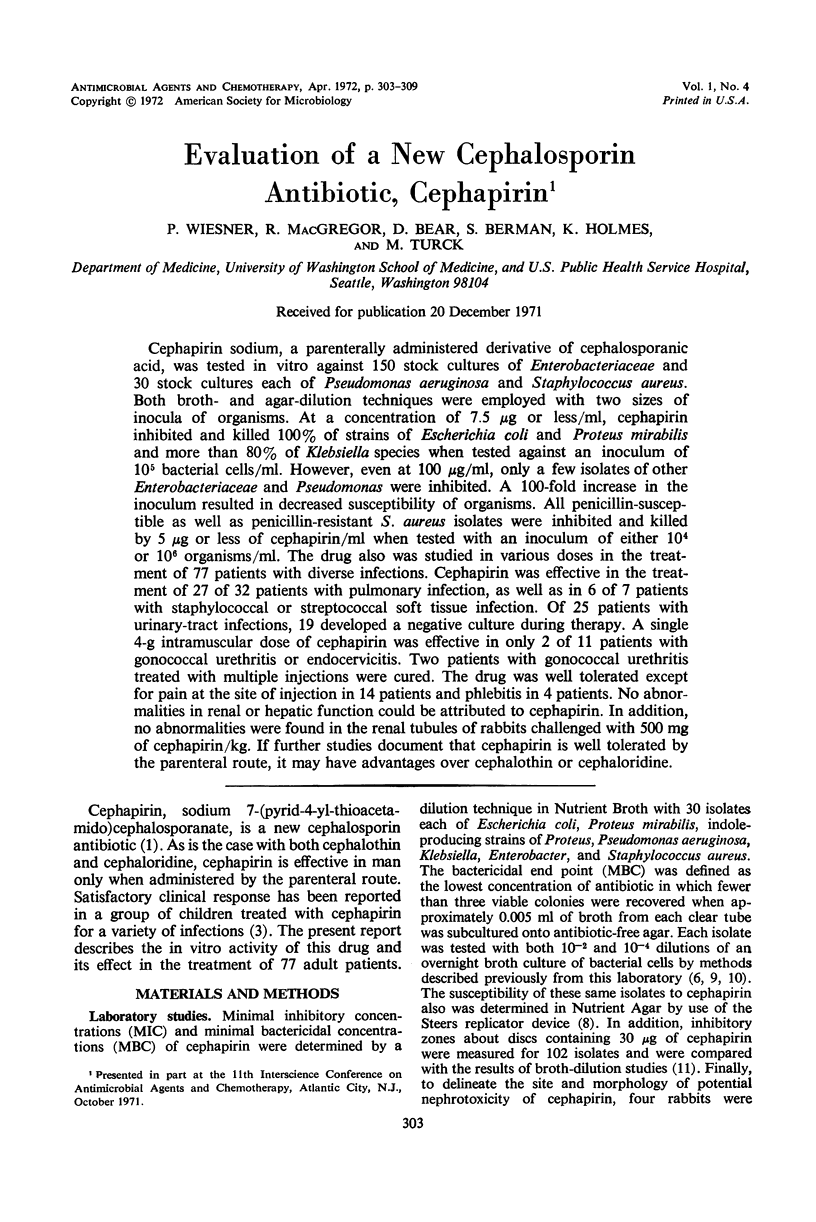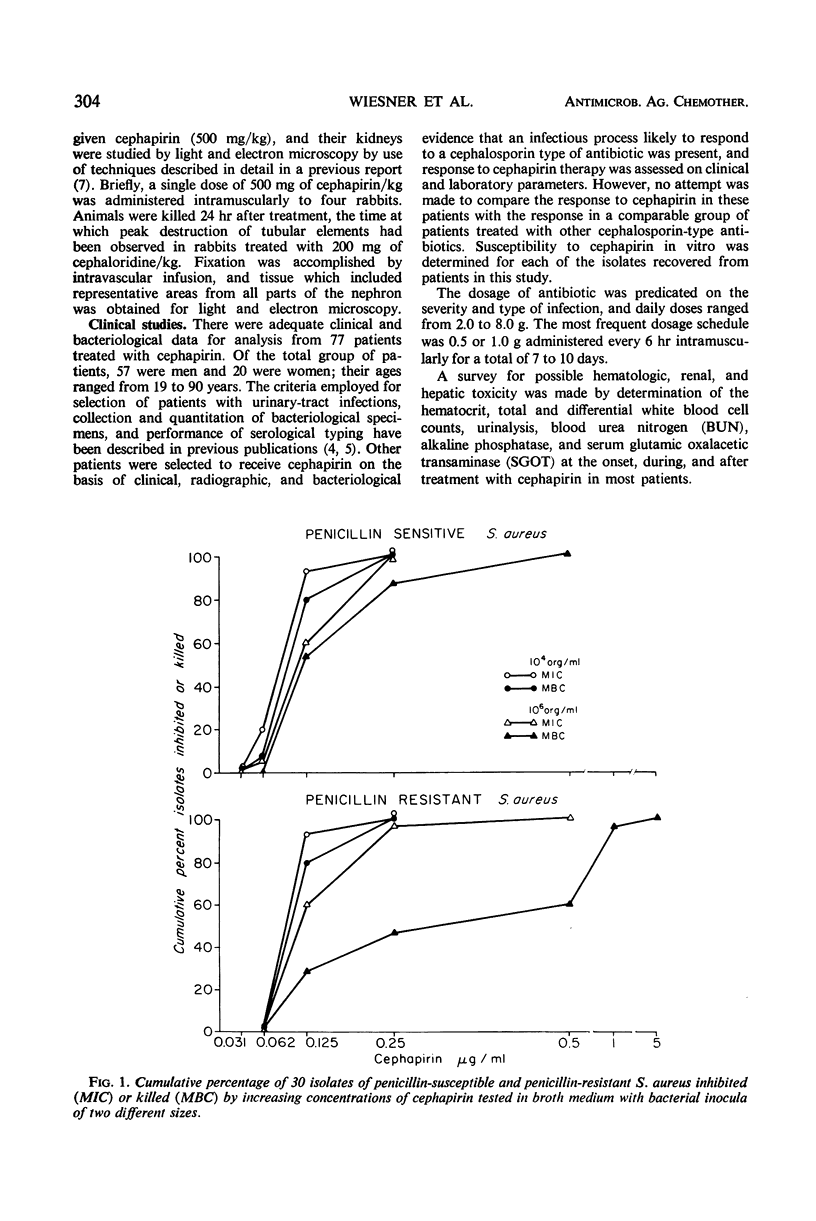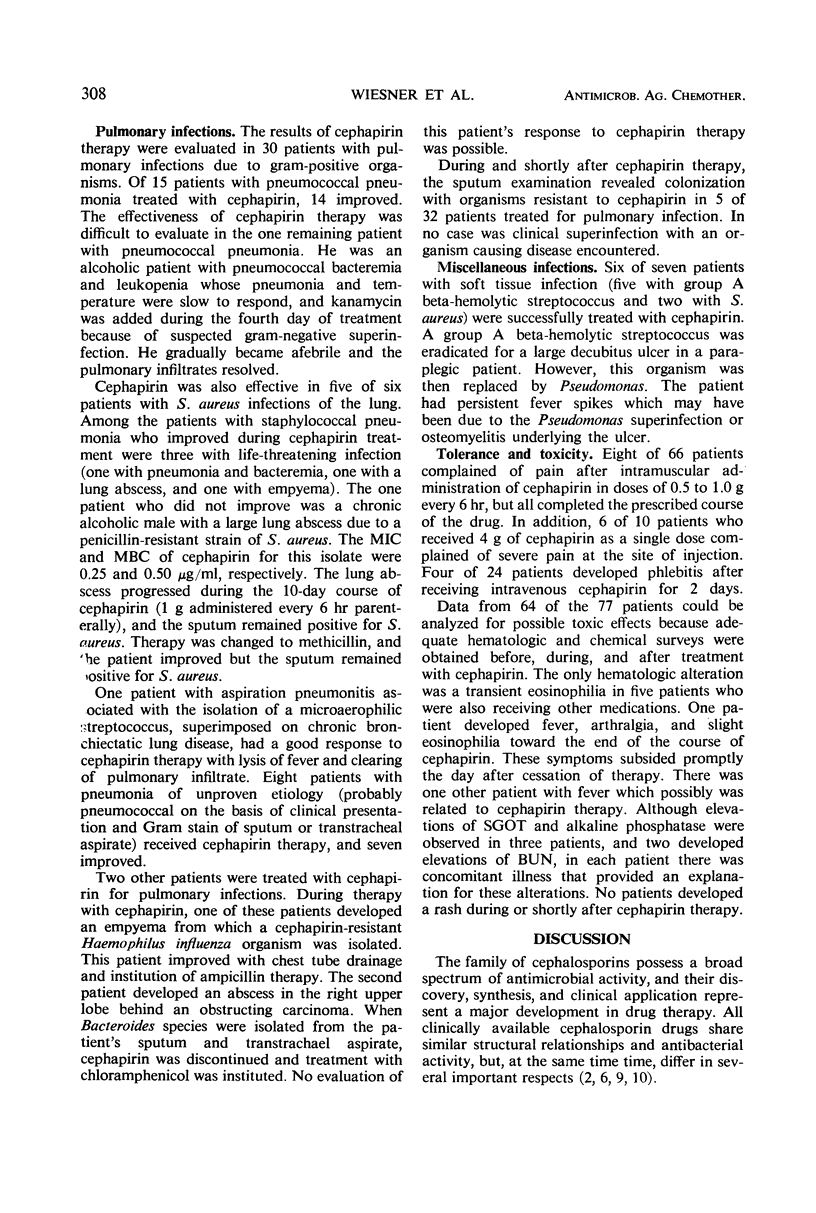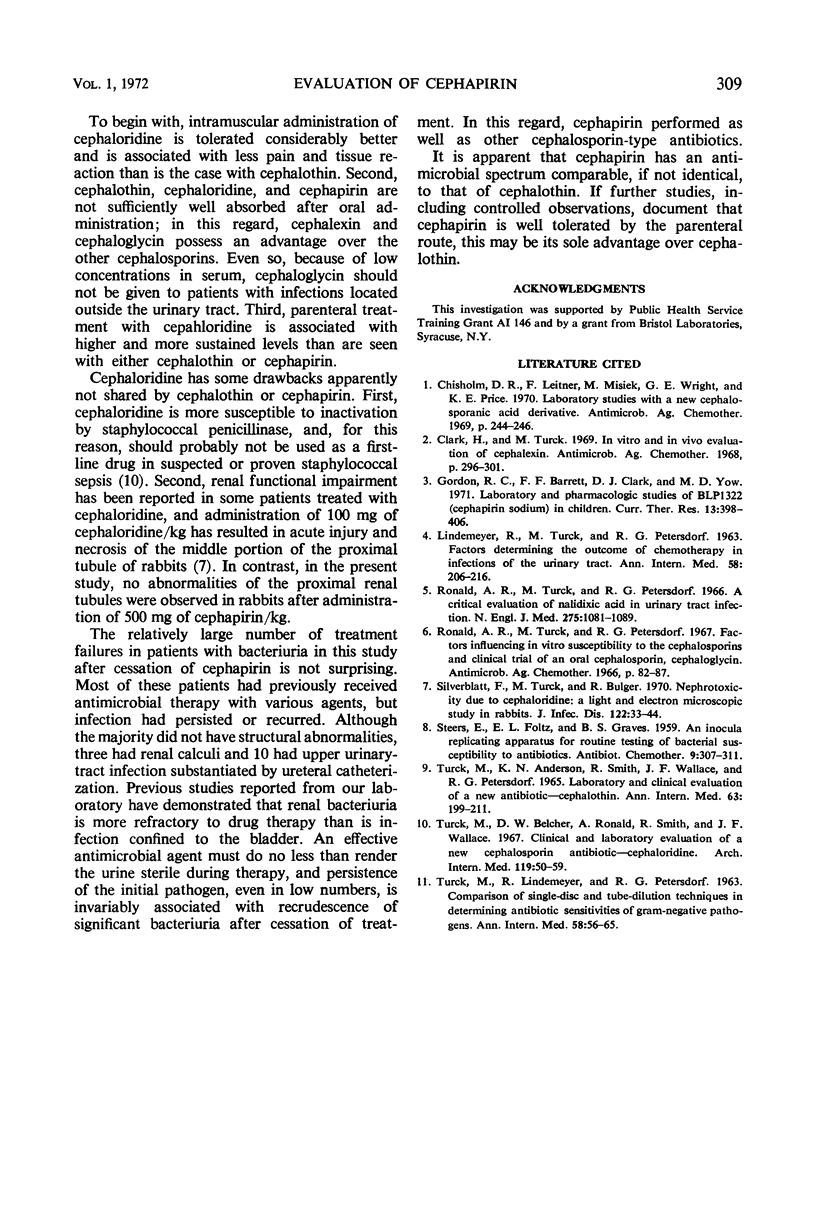Abstract
Cephapirin sodium, a parenterally administered derivative of cephalosporanic acid, was tested in vitro against 150 stock cultures of Enterobacteriaceae and 30 stock cultures each of Pseudomonas aeruginosa and Staphylococcus aureus. Both broth- and agar-dilution techniques were employed with two sizes of inocula of organisms. At a concentration of 7.5 μg or less/ml, cephapirin inhibited and killed 100% of strains of Escherichia coli and Proteus mirabilis and more than 80% of Klebsiella species when tested against an inoculum of 105 bacterial cells/ml. However, even at 100 μg/ml, only a few isolates of other Enterobacteriaceae and Pseudomonas were inhibited. A 100-fold increase in the inoculum resulted in decreased susceptibility of organisms. All penicillin-susceptible as well as penicillin-resistant S. aureus isolates were inhibited and killed by 5 μg or less of cephapirin/ml when tested with an inoculum of either 104 or 106 organisms/ml. The drug also was studied in various doses in the treatment of 77 patients with diverse infections. Cephapirin was effective in the treatment of 27 of 32 patients with pulmonary infection, as well as in 6 of 7 patients with staphylococcal or streptococcal soft tissue infection. Of 25 patients with urinary-tract infections, 19 developed a negative culture during therapy. A single 4-g intramuscular dose of cephapirin was effective in only 2 of 11 patients with gonococcal urethritis or endocervicitis. Two patients with gonococcal urethritis treated with multiple injections were cured. The drug was well tolerated except for pain at the site of injection in 14 patients and phlebitis in 4 patients. No abnormalities in renal or hepatic function could be attributed to cephapirin. In addition, no abnormalities were found in the renal tubules of rabbits challenged with 500 mg of cephapirin/kg. If further studies document that cephapirin is well tolerated by the parenteral route, it may have advantages over cephalothin or cephaloridine.
Full text
PDF






Selected References
These references are in PubMed. This may not be the complete list of references from this article.
- Chisholm D. R., Leitner F., Misiek M., Wright G. E., Price K. E. Laboratory studies with a new cephalosporanic acid derivative. Antimicrob Agents Chemother (Bethesda) 1969;9:244–246. [PubMed] [Google Scholar]
- Clark H., Turck M. In vitro and in vivo evaluation of cephalexin. Antimicrob Agents Chemother (Bethesda) 1968;8:296–301. [PubMed] [Google Scholar]
- Fichardt T., Sandison A. G. Treatment of oral malignancies by radiotherapy. J Dent Assoc S Afr. 1968 Sep;23(9):296–301. [PubMed] [Google Scholar]
- Gordon R. C., Barrett F. F., Clark D. J., Yow M. D. Laboratory and pharmacologic studies of BL-P-1322 (cephapirin sodium) in children. Curr Ther Res Clin Exp. 1971 Jun;13(6):398–406. [PubMed] [Google Scholar]
- LINDEMEYER R. I., TURCK M., PETERSDORF R. G. Factors determining the outcome of chemotherapy in infections of the urinary tract. Ann Intern Med. 1963 Feb;58:201–216. doi: 10.7326/0003-4819-58-2-201. [DOI] [PubMed] [Google Scholar]
- Ronald A. R., Turck M. Factors influencing in vitro susceptibility to the cephalosporins and clinical trial of an oral cephalosporin, cephaloglycin. Antimicrob Agents Chemother (Bethesda) 1966;6:82–87. [PubMed] [Google Scholar]
- Ronald A. R., Turck M., Petersdorf R. G. A critical evaluation of nalidixic acid in urinary-tract infections. N Engl J Med. 1966 Nov 17;275(20):1081–1089. doi: 10.1056/NEJM196611172752001. [DOI] [PubMed] [Google Scholar]
- Silverblatt F., Turck M., Bulger R. Nephrotoxicity due to cephaloridine: a light- and electron-microscopic study in rabbits. J Infect Dis. 1970 Jul-Aug;122(1):33–44. doi: 10.1093/infdis/122.1-2.33. [DOI] [PubMed] [Google Scholar]
- TURCK M., ANDERSON K. N., SMITH R. H., WALLACE J. F., PETERSDORF R. G. LABORATORY AND CLINICAL EVALUATION OF A NEW ANTIBIOTIC--CEPHALOTHIN. Ann Intern Med. 1965 Aug;63:199–211. doi: 10.7326/0003-4819-63-2-199. [DOI] [PubMed] [Google Scholar]
- TURCK M., LINDEMEYER R. I., PETERSDORF R. G. Comparison of single-disc and tube-dilution techniques in determining antibiotic sensitivities of gram-negative pathogens. Ann Intern Med. 1963 Jan;58:56–65. doi: 10.7326/0003-4819-58-1-56. [DOI] [PubMed] [Google Scholar]
- Turck M., Belcher D. W., Ronald A., Smith R. H., Wallace J. F. New cephalosporin antibiotic--cephaloridine. Clinical and laboratory evaluation. Arch Intern Med. 1967 Jan;119(1):50–59. doi: 10.1001/archinte.119.1.50. [DOI] [PubMed] [Google Scholar]


